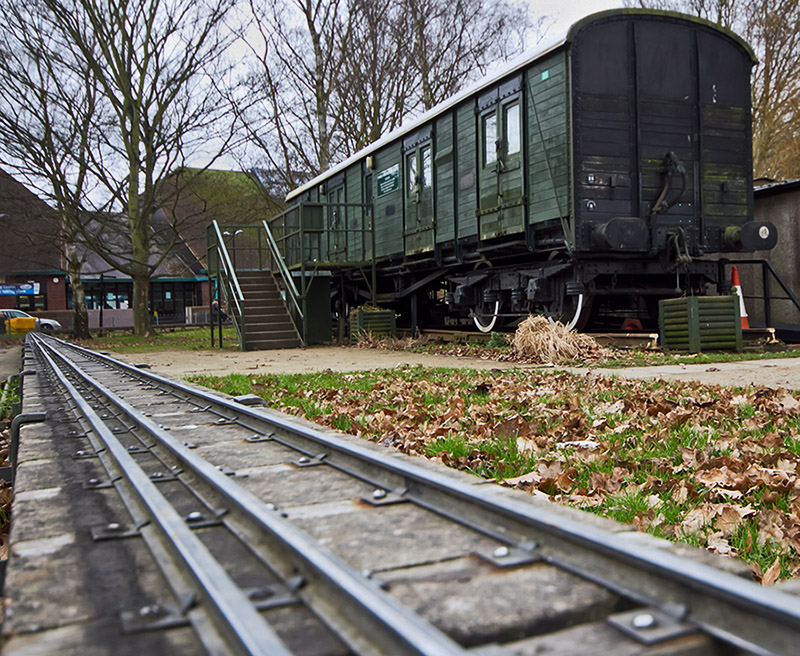Member Login Required
*Please contact Secretary for Password

General Information and Running Conditions.
These notes generally summarise bye-laws in the Society's Rule Book. They are here as a guide only and not intended to be a formal statement of the Society's rules.
Locomotives.
All steam locomotives must be
a) covered by a valid test certificate covering both the boiler and safety valves. A hydraulic test lasts for four years but an annual steam test is required.
b) provided with at least two separate means of feeding water to the boiler one of which shall be a hand pump.
c) a reliable pressure gauge must be fitted and the safety valves be fully operative. The face of the pressure gauge must carry a red line indicating the maximum working pressure.
d) fitted with a grate and ashpan and be capable of dropping or extinguishing the fire in an emergency.
In addition, the use of spark arrestors on locomotives is encouraged.
Non-steam locomotives are permitted at the discretion of the Society Engineer or by a person or persons appointed by the Committee before being used on the Track.
Steaming up and letting down.
Locomotives must only be prepared for steaming-up or let-down on the bays provided. Dropping the fire on the track, except in an emergency, is not permitted. Members of the public and animals shall not be permitted in the area of the steaming bays while locomotives are steaming up or letting down.
Boiler Testing.
Hydraulic testing of boilers and pressure gauges, and steam testing of safety valves is carried out during the morning of the first Sunday of each month, subject to prior arrangement with the boiler tester. Members should ensure, prior to hydraulic testing, that they have the necessary fittings to blank off second safety valves and the pressure gauge and to allow the boiler to be connected to test equipment. Pressure gauges must be tested at time of the boiler test.
There is a code to which model locomotive boilers are tested to and those of the Society are fully in accordance with this. Members' boilers need to be built to a published design or standard and initially tested with the cladding removed so that the boiler can be monitored for imperfections. The Society does offer a boiler testing service to its members but will only test fully silver-soldered copper boilers with the relevant documentation and not soft-soldered screw-stayed and caulked boilers. The Society will continue to test screw-stayed boilers where fitted to locomotives currently operated by Society members.
Track Marshal.
The Society appoints a Track Marshal for all public running sessions. He is responsible for all aspects of that running session. He expects cooperation from Members and his decision on any aspect of that running session is final.
Use of the Track.
a) Reliable and adequate couplings must be provided between Engine and Tender or Locomotive and Train or Drivers Truck. These couplings shall consist of a main coupling plus an additional safety coupling between each of these train units.
b) The mechanical safety of any locomotive is the direct responsibility of the owner (driver) who shall also be deemed responsible for the braking efficiency of his train and trolley and the safety of his passengers.
c) All trains must at all times maintain a safe braking distance.
d) When any form of signalling is in force (by hand, mechanical or automatic) such signals must be obeyed.
e) Locomotives fitted with drain cocks, injector overflows, blowdowns, or any other method of discharging water or oil must be so arranged that such waste products are discharged away from running rails or spectators. Similarly lubrication (mechanical and hand) must be so arranged as to avoid fouling the Track.
f) All drivers shall carry a referee type whistle to summon assistance in an emergency, or to warn approaching trains of possible danger etc.
g) Drivers are responsible for ensuring that a trolley is positioned in the siding for their use, and that pins are available, before steaming up, or readying their loco. Assistance should be requested if so required.
h) All incidents or accidents must be recorded on the relevant Health and Safety forms provided, and a note made under the comments box on the daily running sheet. In the event of any injury or damage (whether or not a claim is likely to be made against the Society), an officer of the committee should be informed without delay.
Visiting Drivers.
Visiting drivers are permitted. They must complete and sign a Visitors Form at each visit. The Society's Rule Book provides further information on Visiting Drivers.
Young Drivers.
Members of the Society over 12 years of age and under 16 years of age may drive on the track subject to conditions set out in the Society's Rule Book.